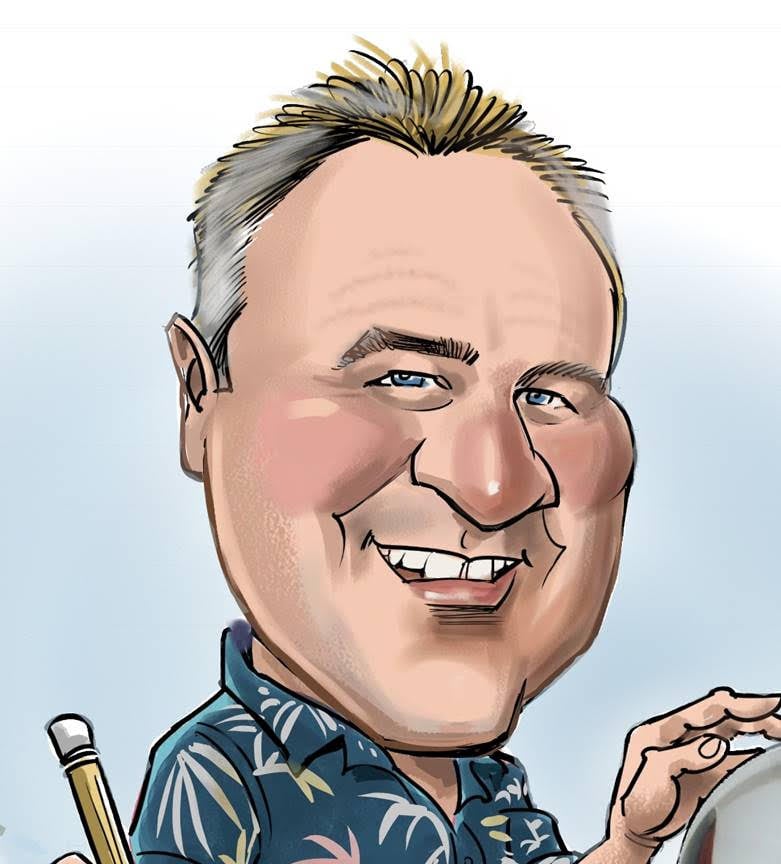Agency owners are always looking for innovative strategies to stand out from the competition. One strategy that every agency owner should consider is productizing services: picking a problem you solve really well, creating a category for it, and then marketing it as-is.
Ernesto Tagwerker achieved phenomenal growth by embracing this approach with OmbuLabs, a software boutique that specializes in JavaScript and Ruby. Starting as a freelancer who built his own software products in his spare time, he is now the CTO of the fully remote agency with 20 full-time employees and five contractors spread across the world.
We sat down to chat about how he was able to grow and scale OmbuLabs through productization, how the approach goes hand-in-hand with a healthy pipeline, and what agency owners need to know to get started.
Here’s what I learned.
Solve a problem, carve a niche
If you've never ventured into the world of productization, the term might sound a bit abstract. It's easy to get overwhelmed by the unknowns and the quest for that killer product. How do you even start?
But for Ernesto and his team, the light bulb moment came with a single project. Seven years ago after they have successfully completed an upgrade, they asked themselves, “Can we do this for a lot more clients? Can we create a knowledge base and a process that we do over and over again?”
They made it happen.
The thing I like about this approach is that it leaves a lot of room for trial and error. You don’t have to invest valuable billable hours in lengthy research and development experiments. Your first product can come out of client work you’re already getting paid for. And then comes the ah-ha moment when you realize other clients need the same thing – and you’ve got the secret sauce.
Identify a problem and propose a repeatable solution, and you’ve essentially created a service niche. And now, it's time for the real fun to begin: content marketing.
Educate your audience
If you build it, they will come – as long as they know you exist.
When you create something brand new, like we did with Virtual CFO services back in the early 2000s, you've got to educate your audience about the problem and show them that you have a tested, repeatable solution.
It takes time. You don’t wave your magic wand and get all these clients tomorrow. You have to spend a lot of time and effort and money.
“It’s not a magical pipeline from day one,” Ernesto cautions. “We have 1,000 subscribers to our newsletter and a ton of articles people can find organically, but it did take a few years for it to become a big success. At the beginning it was very, very slow until we started to get this SEO juice and a lot of organic traffic.”
We spend probably between about 7% of our revenue just in marketing. That might sound like a huge amount. But it pays off when people come to you because they see your webinars, read your articles, and listen to your podcasts.
Niching speeds up that process. When Summit specialized in creative agencies, we started seeing that hockey-stick shape upswing, going from picking up about four clients a year (which you really can’t scale with) to about four clients a month.
“Do you want to compete against every agency in the world or do you want to compete against the handful that works on your specific problem?” asks Ernesto. “When we specialized, we cut our competition down from 1,000s to a handful. We asked ourselves, ‘Do we want to be another design and development agency or do we want to niche down in this technical debt space in JavaScript or Ruby?’”
Go for the niche, Ernest argues, and you’ve got a built-in answer to the pricing question, “Why would I pick your agency over some other agency in the middle of nowhere that's charging half of what you're charging?”
“Well,” he answers, “we are the experts in this field. That's why you should pay us top dollar.”
Build your pipeline with pricing
When I talk to folks about productization, I hear a lot of worry around pricing. Believe me, I get it: In the early days at Summit, we set our pricing so low we were closing almost every deal. At first when I looked at our close rate, I was psyched, but then I realized it was because we were undercharging. Oops. It took a few tries, but we got the price up and the close rate down.
One piece of advice Ernesto offers is to start with an initial offer: he charges around $12,000 for a two-week audit. Thanks to that work, they’re able to tell clients how much the upgrade would cost and how long it would take, allowing the client flexibility to slow down or speed up based on their budget.
Not only does the audit allow his team to do groundwork to make sure the upgrade goes smoothly, it provides the client full transparency about what is going to come next – making it likelier they’ll sign on for the larger project.
An added bonus for this pricing approach: it helps qualify prospects.
“Sometimes, you'll get leads that aren’t the right client for you,” Ernesto says. “If they say ‘Whoa, $12,000 for a roadmap is way too much money,’ they're not the right fit for us. That way you don't waste your time jumping on three different calls and signing NDAs, to find out, ‘Oh, no, we had a budget of $5,000 for the entire project.’”
Prevent leaks in the pipeline
Finding good customers is really tough. You're hoping so much marketing effort generates so many clients. You don't want to lose clients because of poor service.
Business owners are always hustling to get the best technical folks and fine-tune their processes, but they forget about support. And without support, you risk unhappy clients.
To maintain a high level of client satisfaction, OmbuLabs invests in a staff engineer who is not assigned to any client project. “I used to be the one doing all the firefighting when there was a problem with a client,” Ernesto says, “And then I realized I could have a staff engineer on the bench to help firefight for me.”
“At the same time, the staff engineer is available to pair with his engineers and to make sure that we spread the knowledge not just through documentation, but to have a cross-functional person who can switch quickly between project A and project B.”
On top of that, he has really great project managers – a role that has been a game-changer for Summit by creating a rock-solid onboarding process to keep the client happy and keep scope creep in check (which keeps our VCFOs happy, too).
Ernesto agrees: “Once we have the roadmap and promise the client, ‘Hey, we're going to do this between three and five months,’ they make sure we stay on course and ship the project on time.”
It can be hard to bring someone on board who could be generating revenue and say, “I’m going to shift them to a support role.” I mean, we're talking about potentially waiting 2-4 years to see any real payoff. But let me tell you, the investment is totally worth it when you see that client retention rate soaring through the roof.
You don’t want clients leaving because the service level isn’t up to standards. You only want them to leave because you did such a good job, they outgrew you.
Create a playbook to rinse and repeat
Anytime you try something new, there will be lots of trial and even more error. When we rolled out our first products at Summit, we made our fair share of mistakes, including undercharging and over promising.
But to the best of your ability, document your process – mistakes included, so you can learn from them and fail faster next time.
Use the first successful product as a springboard. Ernesto has launched several products in the past year, using the formula he developed during his first go around. Now he’s got diversification that protects him against downturns.
Think of your productization experience as an opportunity to write your own playbook. First you’ll see ROI on the current product you’re building. But the potential ROI is huge: Once you’ve nailed down that productization roadmap, you’ll be able to repeat the process over and over for future products, with less trial, way less error, and way bigger wins.
.png?width=120&height=77&name=Summit-Virtual-CFO_color_rgb%20(1).png)















